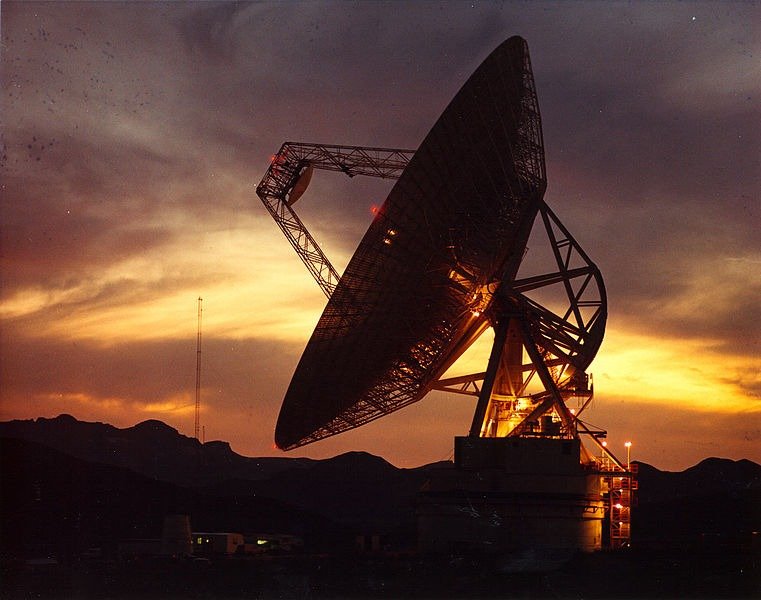Image credit: NASA
But with the novel means, proposed by myself, I can readily demonstrate that, with an expenditure not exceeding two thousand horse-power, signals can be transmitted to a planet such as Mars with as much exactness and certitude as we now send messages by wire from New York to Philadelphia.
Nikola Tesla, 1901
When you send a robotic explorer on an interplanetary space mission, it is nice to keep in touch. Unfortunately, because of the Earth’s rotation and the fact that the signal gets weaker as it travels through space, it is difficult to keep a space dialogue going. If there is more than one spacecraft you shout instructions to and listen to the whispers of its science instruments, things get even more complicated. You need a loud voice and really big ears!
Deep Space Ears: NASA
The largest long-distance listening ear in the World is NASA Deep Space Network, or DSN. It is in fact not one, but a number of “ears”, i.e. radio dishes, concentrated in three different locations around the globe 120 degrees apart in longitude. This way the instruments in the next location can pick up a signal from a spacecraft before it disappears from view in the previous location.
The twelve dishes that make up NASA DSN stations are located in Madrid (Spain), Goldstone (USA) and Canberra (Australia). Each station has a huge 70 m radio dish as well as several smaller radio telescopes that can work independently or as an array. A great website called DSN NOW shows the activity of each antenna of the Deep Space Network, i.e. what spacecraft it is talking to, whether an antenna is transmitting or receiving and more.
Originally, each complex had its own team of operators who worked in shifts 24 hours a day. But because of the budget cuts, NASA had to come up with an alternative plan called “Follow the Sun”. Since 2017 a single DSN complex tracks all spacecrafts in all three locations during the daytime hours in its part of the World.
Deep Space Ears: ESA
The European Space Agency (ESA) uses NASA DSN to communicate with some of their spacecrafts. They also have their own Deep Network Stations, the three 35 meter radio telescopes located in New Norcia, Australia (in operation since 2002), Hebreos, Spain (in operation since 2005) and Malargue, Argentina (in operation since 2012). These stations are operated remotely from Network Operations Centre in Darmstadt, Germany.
Some other space agencies have their own deep space tracking systems too!
Problems with long-distance space communication
To communicate with the ground, all spacecrafts use frequency bands specially allocated for the “deep space” conversations. These bands are different from those used for radio astronomy and for talking to orbiting satellites. Given the high number of ongoing space missions, some of the frequency bands are already getting very congested. According to the International Telecommunication Union “the return of science data from deep-space missions is limited by the capacity of the space-to-Earth links. Often, the amount of science data returned to Earth from a mission during its lifetime is only a small fraction of what it is capable of producing”. Shocking!
In the nearest future new deep space missions will be launched. Moreover, multiple spacecrafts are expected to explore the same targets at the same time. This means a vast number of robotic explorers will be simultaneously sending and receiving a huge amount of data.
The capability of our ground stations will have to grow so that we could keep up the interplanetary conversation! How will that be achieved? With a bigger network of smaller ground-based dishes? With some advances in signal processing? We’ll see!
Curious about satellites?
- Read the stories of lost-and-found satellites in our blog post Where is my satellite?
- Learn about NASA mission to study the Solar Corona in the post Parker Probe: the mission to solve the mystery of the Sun
- Find out all about the 11 year long mission to the Asteroid Belt objects Vesta and Ceres in our blog post The last days of Dawn spacecraft
- Visit our inflatable planetarium or send your questions and comments to our portable dome team

